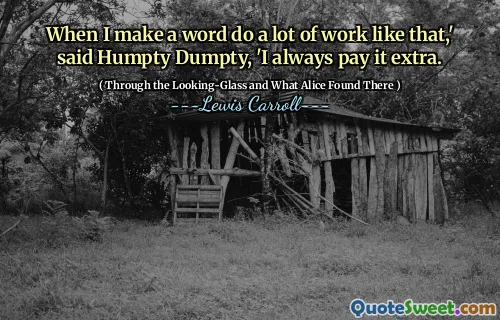And if you take one from three hundred and sixty-five what remains? Three hundred and sixty-four, of course. Humpty Dumpty looked doubtful, I'd rather see that done on paper, he said.
In this excerpt from Lewis Carroll's "Through the Looking-Glass," Humpty Dumpty ponders a simple arithmetic question. When asked to subtract one from three hundred and sixty-five, the answer is straightforward: three hundred and sixty-four. He appears unsure or skeptical about the idea of expressing this idea on paper, indicating a preference for more concrete or visual understanding.
"And if you take one from three hundred and sixty-five what remains?" is a reflection on basic subtraction. Humpty Dumpty's comment, "I'd rather see that done on paper," shows his doubt or reluctance to rely solely on verbal or mental calculation and emphasizes the importance of written work for clarity and certainty in mathematical processes.






